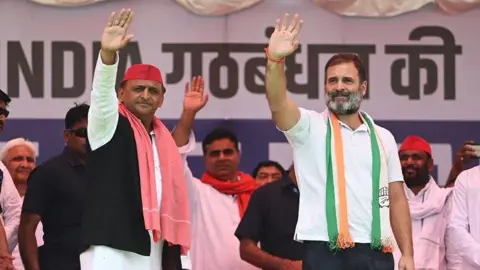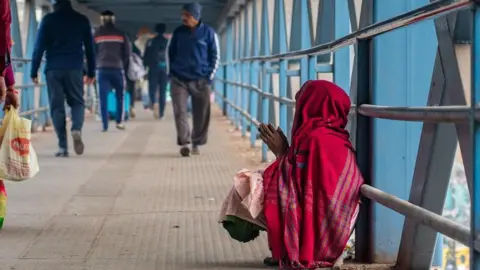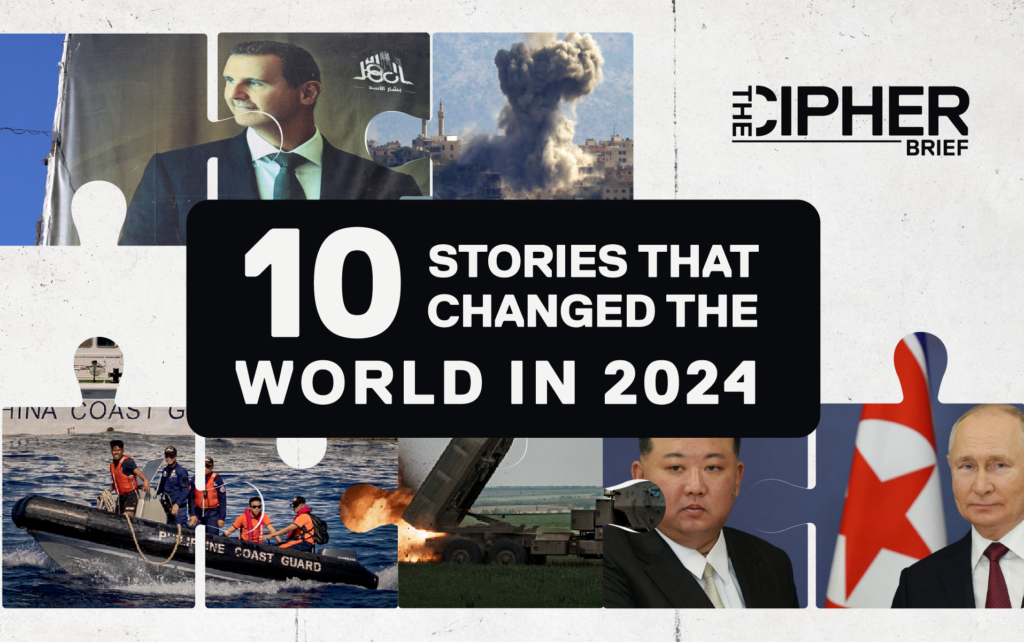
 Ankit Srinivas
Ankit Srinivas
A group of women in Uttar Pradesh, India's most politically crucial state with 80 parliament seats
As India votes to elect a new government, all eyes are on the northern state of Uttar Pradesh, commonly known by its initials UP.
Spread over an area roughly the size of Britain, the state packs in nearly four times as many people. With an estimated 257 million people, it is India’s most populous state and would be the fifth largest in the world if it was an independent country after India, China, United States and Indonesia and ahead of Pakistan or Brazil.
The state is among just three in India which are voting in all seven phases in the elections which are spread over 44 days. (Voting ends on 1 June and results will be announced on 4 June.)
So, it’s no surprise that UP - which elects 80 MPs in the 543-member lower house of parliament (the Lok Sabha) - is considered key to Prime Minister Narendra Modi’s re-election bid as he seeks to return for a third consecutive term.
“It’s commonly said that ‘the way to Delhi is through UP’ and a party that does well in the state generally goes on to rule India,” says Sharat Pradhan, senior journalist in the state capital, Lucknow.
“Eight of India’s former prime ministers,” he adds, “have represented the state and in 2014, when Mr Modi - originally from the western state of Gujarat – made his debut as an MP, he too chose UP.”
Mr Modi held his seat in the ancient city of Varanasi in 2019 and aims to do so again this year.

 Getty Images
Getty Images
Narendra Modi is seeking a third consecutive term as India's prime minister
So, Mr Modi has been on a whirlwind tour of the state, doing roadshows and addressing rallies – sometimes up to seven in a single day – to convince voters to support his party. He’s set his Bharatiya Janata Party (BJP) a goal of 370 seats - a party needs 272 to win.
In 2014, BJP won 71 seats in the state and in 2019, it got 62. This time, party leaders say, they’re aiming for 70 plus – even all of its 80 seats.
The maths, the opposition Congress party’s Gaurav Kapoor says, is simple – “a party that wins 70 seats here needs just 202 more to form a government”.
Earlier this month, when Mr Modi arrived in the city to file his nomination, accompanied by the state’s Chief Minister Yogi Adityanath, a saffron-robed Hindu monk-turned-politician, thousands of supporters gathered to cheer them on.
A truck painted saffron – the colour associated with the BJP – and decorated with marigold flowers carried them as their cavalcade made its way through the narrow streets of the ancient city.
Mr Modi waved and held up a replica of the lotus flower – his party symbol – as men and women dressed in saffron clothes and caps raised slogans in support.

 Getty Images
Getty Images
Opposition leaders Akhilesh Yadav (left) and Rahul Gandhi (right) have drawn huge crowds at their rallies in Uttar Pradesh
It’s not just the BJP that’s eyeing the state regarded as “the biggest prize” in Indian election. The Congress, which was dominant in the state for four decades until it was edged out by local parties in 1991, is fighting here in alliance with the regional Samajwadi Party (SP). The alliance has also claimed that “we are winning 79 seats and have a fight in one”.
Counting of votes on 4 June is likely to show claims on both sides are exaggerated, but analysts point out that all the elections in the past 10 years in the state have gone in the BJP’s favour. And the upbeat mood at Mr Modi’s roadshow reflected that self-assurance.
- Coronavirus overwhelms India's most populous state
- Why it took 42 years to convict a 90-year-old in India
Most Varanasi residents in the crowd talked about the transformation their city has undergone in the past decade – the new highways that have been built, the expansion of the Kashi-Vishwanath temple and the spruced-up banks of the river Ganges.
Watching Mr Modi’s procession from his shop along the route of the roadshow, Ambrish Mittal, a chemist, says “the city roads are cleaner and the long power cuts that plunged the city into darkness for hours are history”.
But despite its political significance, UP remains among India's poorest states - though there have been some positive changes in the past few years.

 Getty Images
Getty Images
With an estimated 257 million people, Uttar Pradesh is India's most populous state
Government data shows that millions more now have electricity, access to toilets and are using clean fuel compared to five years ago.
But UP still has the largest concentration of poor in the world – with 23% of its population recorded as multidimensionally poor even after tens of millions have been lifted out of poverty.
The state also records tens of thousands of violent crimes against women every year and continues to make headlines for cases where the accused are politically influential men.
And although these ills have plagued the state historically, opposition parties have seized upon them and been raising them at their campaign rallies as the BJP has been in power nationally for a decade and also ruled UP for seven years now.
The huge turnout at their meetings, opposition leaders say, reflects voter disenchantment with the BJP.
“Until a few weeks back, election in the state had seemed like a one-sided contest with the odds stacked against us,” says Abhishek Yadav, a Samajwadi Party youth wing leader and a star campaigner for his party.
But he feels that the opposition's campaign has gathered pace as unemployment and price rise have become main issues.

 Getty Images
Getty Images
Uttar Pradesh is home to tens of millions of poor people
The BJP claims that a lot of investment now started coming into the state and there’s been an industrial revival, but Gaurav Kapoor of the Congress says the government’s failure to establish any new industry or create jobs has alienated many voters.
“Temples are the new industry for Mr Modi. Post-Covid, the only business that has progressed in the state are hotels and restaurants and other things to do with religious tourism. But the youth want jobs.”
Ashwani Shahi of the BJP, however, blames opposition parties for everything that’s wrong with the state.
- Are women really thriving in Uttar Pradesh as PM Modi claims?
- A fatal assault, a cremation and no goodbye
“In 2017 when the BJP won UP, we inherited a state which was poor, had high rates of illiteracy and unemployment. We have started work to change that.
“But It takes time to uplift people from poverty. I think By 2029, we’ll be able to take 90% people out of poverty.”
Mr Shahi admits there is some anti-incumbency, but the BJP will still romp home in Uttar Pradesh – and the rest of India - because of Mr Modi.

 6 months ago
26
6 months ago
26








